Interview: Christine Dünser — Shoemaker
With all her Heart and Sole
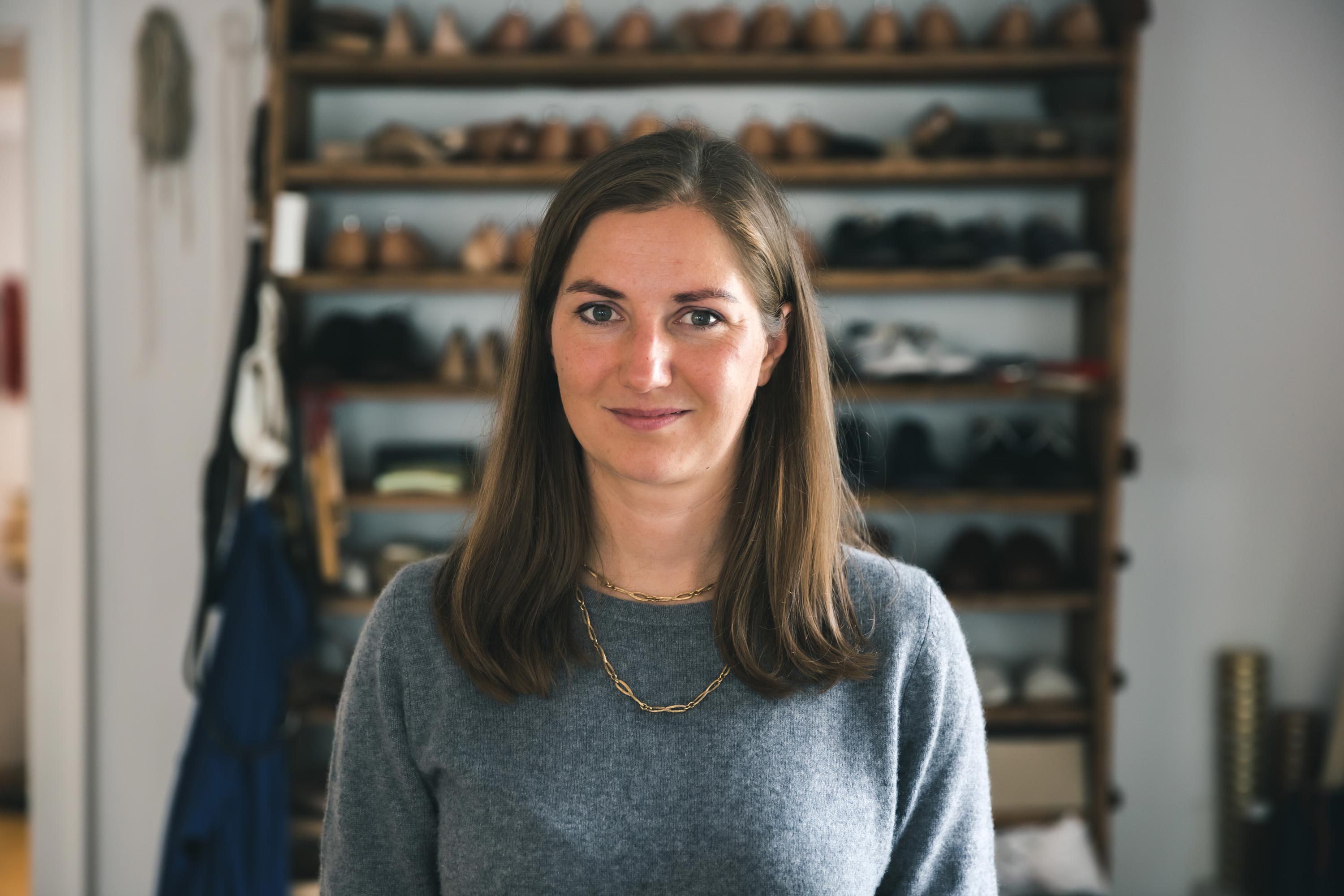
Small back alleys of Dornbirn, Vorarlberg’s most densely populated city, lead us to Christine Dünser’s particular manufactory, where she works, lives and breathes the craft of shoemaking. Her journey was a winding one, and led her to places like India, Zimbabwe and especially Italy, where she learned the art of making shoes from scratch in a castle near Florence.


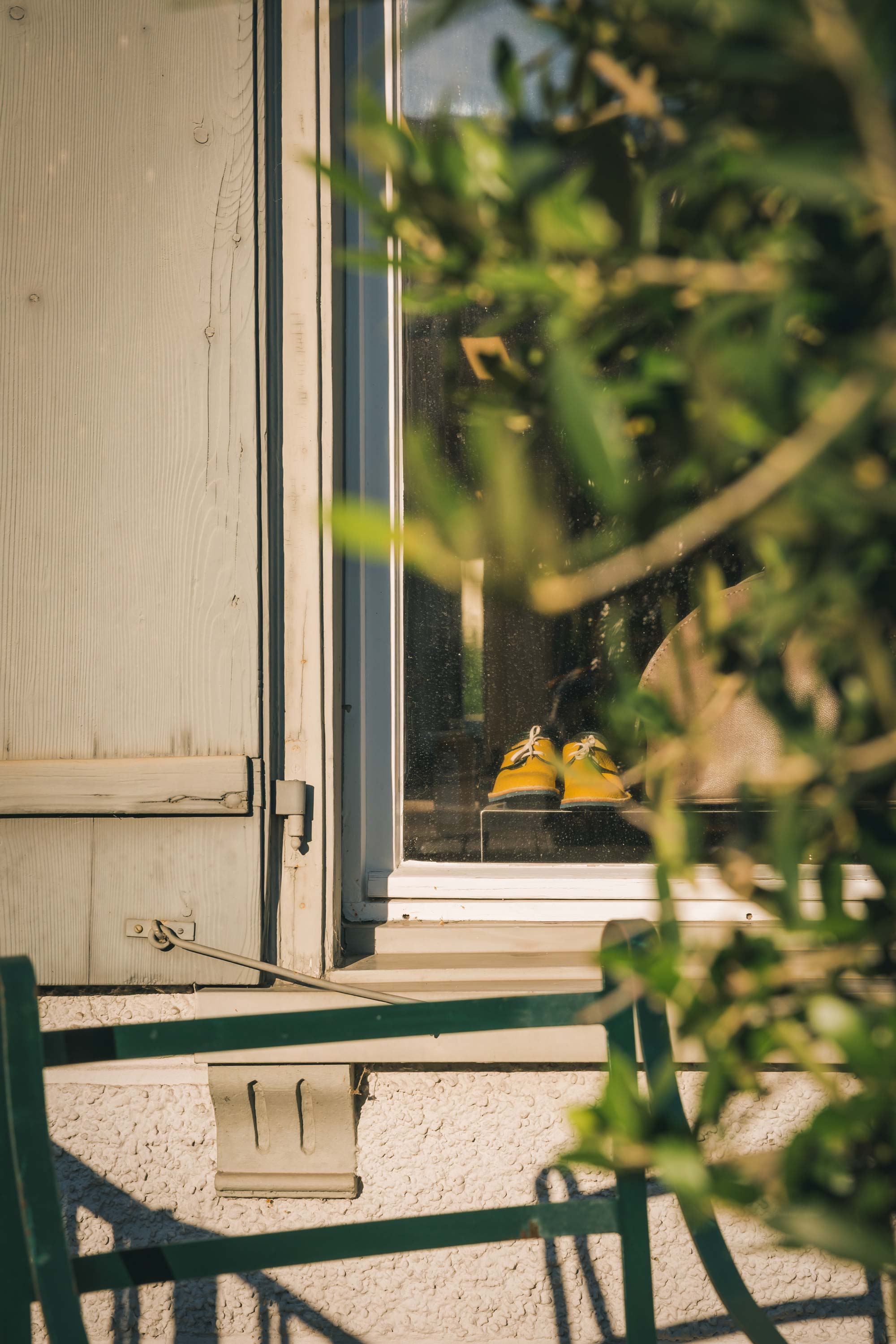
A wooden shoe last dangles from the door. The outline of another shoe drawn in chalk in front of the doorstep and beautiful leather boots greet us from the window – we must be in the right place. While we try to grasp the beauty of this little workshop from the outside, Christine Dünser opens the door and welcomes us. She wears a blue skirt, a gray wool jumper and a red pair of shoes, which – of course – she made herself.
As we step in, the world of shoemaking presents itself before us in numerous small parts – drawings, designs, leather, laces and plenty of (old) tools. Many of the latter we’ve never seen before.
As we step in, the world of shoemaking presents itself before us in numerous small parts – drawings, designs, leather, laces and plenty of (old) tools. Many of the latter we’ve never seen before.
Rays of morning light highlight certain bits and pieces on the work table. Christine Dünser has set the scene.

Shoemaking is such a beautiful, ancient craft – is it a family tradition you carry on or are you the first one in your family to do this?
There are no shoemakers in my family, but what they have in common are good mechanical skills. They are all makers in a way. To be honest: entering the trade wasn’t my exact plan either, but everything fell into place when I decided to go to Florence’s Polimoda school. The roads that led to Florence were winding though. After my A-levels, I went to Zimbabwe to help a family with their kids and I worked in a shelter for the homeless in India. Also, I did something pretty typical for people in my region – I worked in a bar in the Arlberg skiing area to earn some money.
There are no shoemakers in my family, but what they have in common are good mechanical skills. They are all makers in a way. To be honest: entering the trade wasn’t my exact plan either, but everything fell into place when I decided to go to Florence’s Polimoda school. The roads that led to Florence were winding though. After my A-levels, I went to Zimbabwe to help a family with their kids and I worked in a shelter for the homeless in India. Also, I did something pretty typical for people in my region – I worked in a bar in the Arlberg skiing area to earn some money.
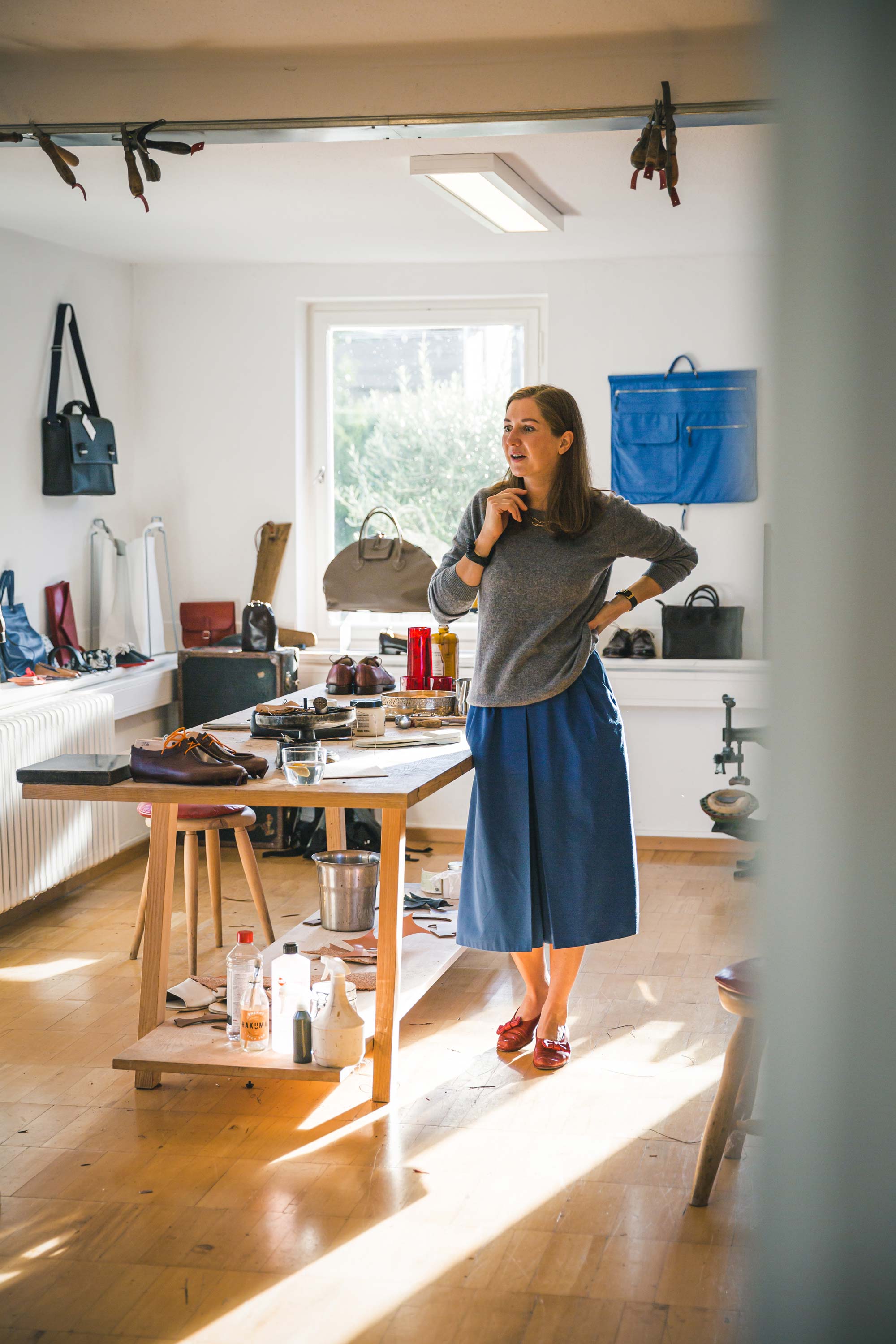
But during that time, I already knew about this great school down in Italy and looked at their website every day. I was dreaming of a future life full of creativity. And I also thought: You can reinvent yourself every single day of your life. When I went to the interview, I felt really awkward – there were people from all over the world. Everybody seemed so prepared and had their big portfolios ready. I brought my small notebook. But in the end, I got in. When it was finally time to move there to study, I arrived in Florence with plenty of boxes but no apartment in sight.

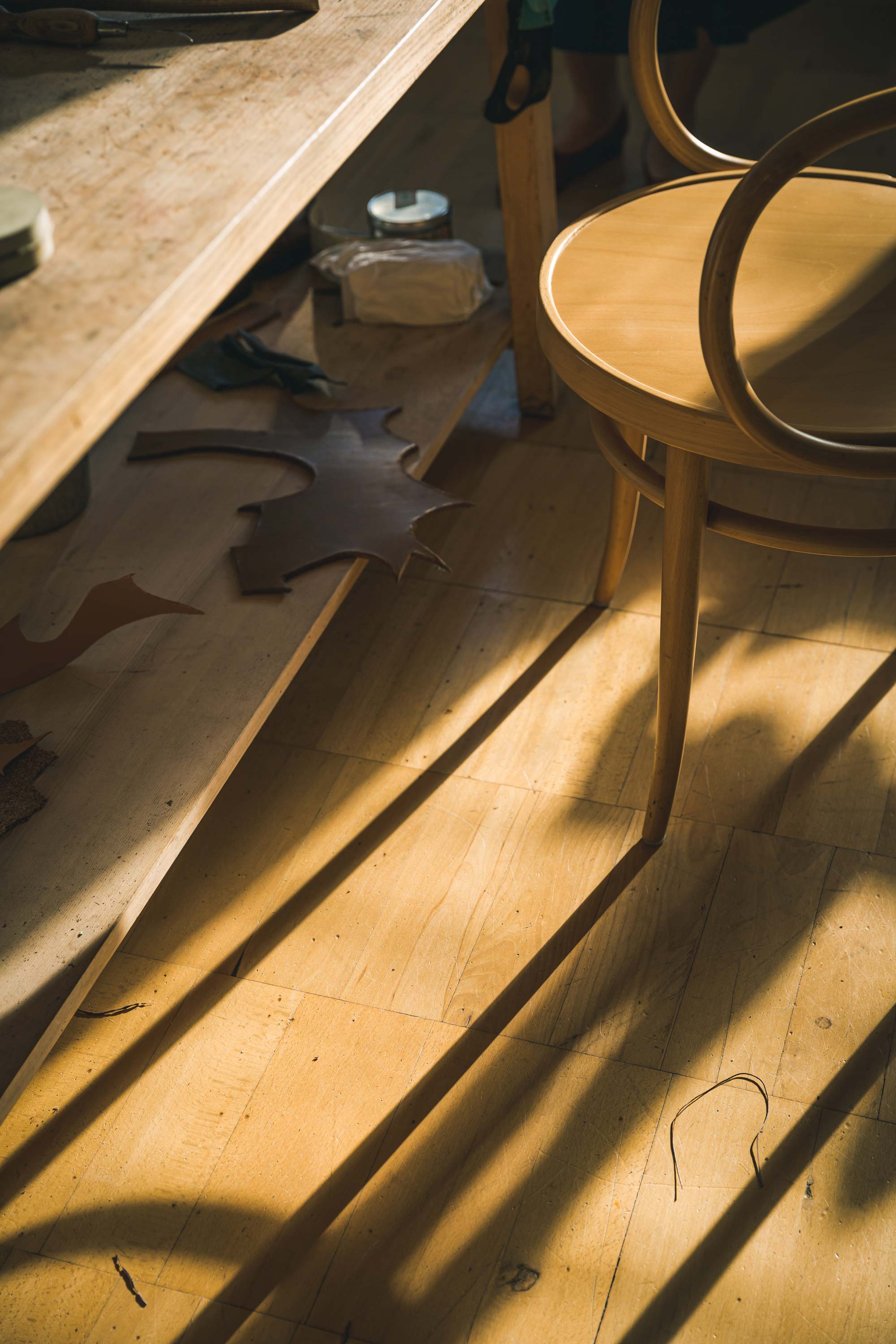


But the apartment and the sense of belonging came in the end?
Yes, they did. I moved in with an Indian girl named “Pretty”, who I met in an internet café. While staying in a hotel, we went apartment-hunting and saw five different ones on a Sunday until we found our place. We took a taxi to move all our boxes into the new place, but at the end of this spontaneous venture, we ate warm curry on our kitchen table and both felt at home. As if it were exactly the right place to be. It’s the same with this space we’re in at the moment.
How did you come across it?
Well, I sort of looked for it for about one year. I didn’t want anything modern, that wouldn’t have been right for me. The search was so intense that it almost felt like a part-time job, and there was always the yearning for some sort of masonry. Then, someone gave me the phone number of the landlord of this very place, which is big enough to work and live in. That’s how I found my workshop and my apartment at the same time. Right from the start I knew that this would be the perfect place for me, even though it took me some time to finally get settled. I spent three months without a kitchen and did the dishes in my bathroom sink. All those incidents, which somehow worked themselves out, turned out to be right for me. The right things usually come easy, don’t they? Sometimes you just need some patience and trust. Trust, that the best solution is around the corner.
Yes, they did. I moved in with an Indian girl named “Pretty”, who I met in an internet café. While staying in a hotel, we went apartment-hunting and saw five different ones on a Sunday until we found our place. We took a taxi to move all our boxes into the new place, but at the end of this spontaneous venture, we ate warm curry on our kitchen table and both felt at home. As if it were exactly the right place to be. It’s the same with this space we’re in at the moment.
How did you come across it?
Well, I sort of looked for it for about one year. I didn’t want anything modern, that wouldn’t have been right for me. The search was so intense that it almost felt like a part-time job, and there was always the yearning for some sort of masonry. Then, someone gave me the phone number of the landlord of this very place, which is big enough to work and live in. That’s how I found my workshop and my apartment at the same time. Right from the start I knew that this would be the perfect place for me, even though it took me some time to finally get settled. I spent three months without a kitchen and did the dishes in my bathroom sink. All those incidents, which somehow worked themselves out, turned out to be right for me. The right things usually come easy, don’t they? Sometimes you just need some patience and trust. Trust, that the best solution is around the corner.
»That’s true. Like philosophical questions, shoes are a daily challenge. You cannot fully reinvent them. That’s what I tried to do a lot, but there’s a reason why shoes look the way they do.«
Christine Dünser
As you’ve studied at Polimoda and have been working for Salvatore Ferragamo – what are Italian influences that you still carry with you? And what other countries or styles influence you?
Different cultures and different places engraved different pictures and beauty standards in my mind, which certainly became part of my creative consciousness in a way. It’s the thoughts and feelings they evoke that inspire me. A lot about shoemaking is just so deeply connected to nature as I work with a natural material – leather. The work itself puts me in a special state. While my hands work, my thoughts go on a journey. I have new ideas or just sail away to some faraway place – it has taken me years to get there. You need a lot of practice until your hands can bring to life what is in your head. Only then, you can call yourself a shoemaker. A true shoemaker comprehends the art of transformation – and that is the shoemaker’s biggest secret.
We don’t know much about shoemaking, but when we listen to you talking about it, it seems like kind of a philosophical act.
That’s true. Like philosophical questions, shoes are a daily challenge. You cannot fully reinvent them. That’s what I tried to do a lot, but there’s a reason why shoes look the way they do. They have to be comfortable, they have to keep you grounded, but at the same time you have to have some space and freedom when wearing them. A proper shoe has to meet the character of the person who wears it.


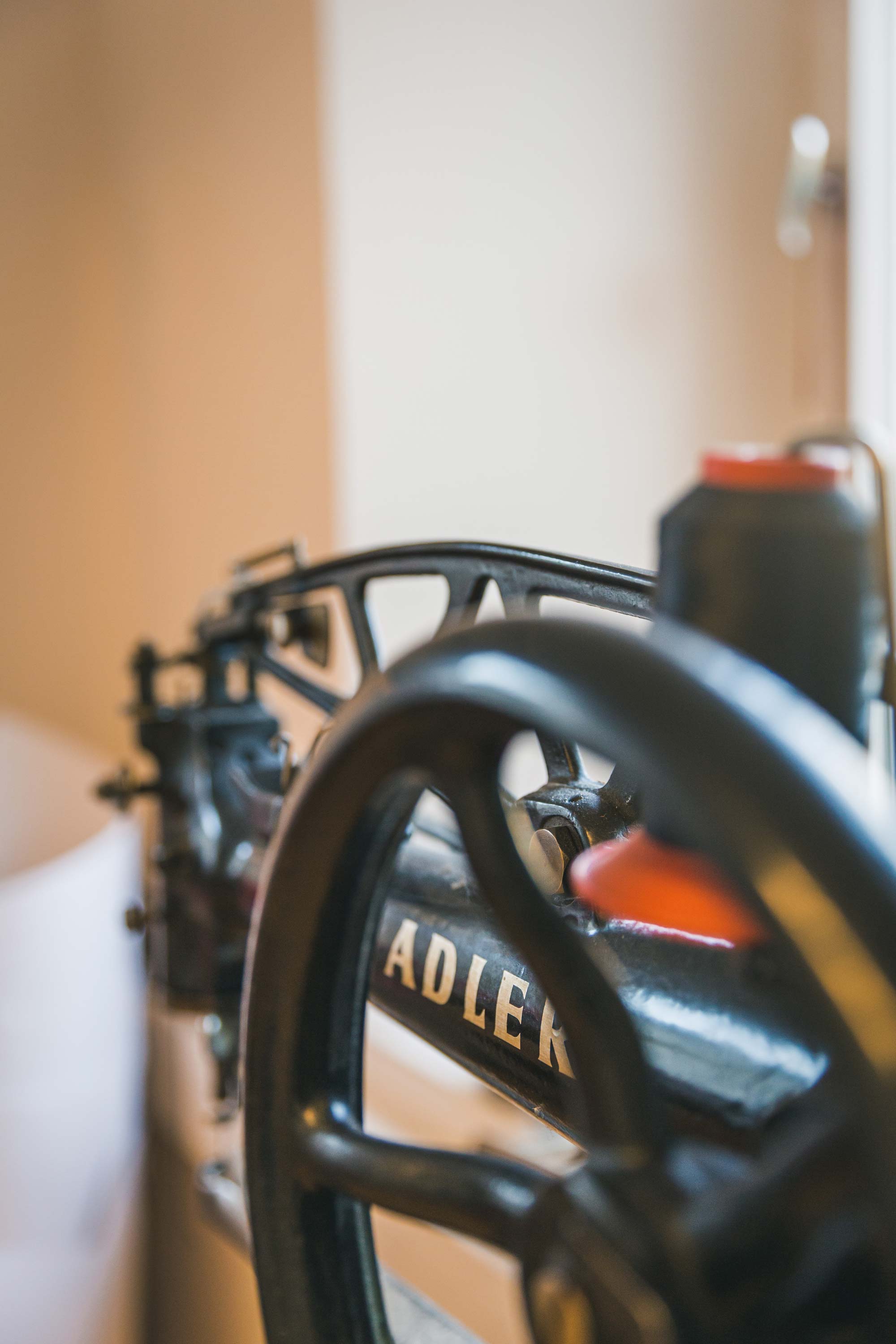

Please try to describe your typical customer!
As I only finish two pairs of shoes a week, the number of my clients is limited as well. On the one hand, I sell them to the group I would call “connoisseurs”. These are people who have been wearing custom-made shoes for most of their lives. Sometimes they also bring their sons for their first black Oxfords. On the other hand, there are the “aficionados” – they want a product that’s close to nature, they want personal service and they love that the shoes are produced in their own region. Additionally, there’s another group I would call “individualists”, who have their own ideas about how their shoes should look like.
As I only finish two pairs of shoes a week, the number of my clients is limited as well. On the one hand, I sell them to the group I would call “connoisseurs”. These are people who have been wearing custom-made shoes for most of their lives. Sometimes they also bring their sons for their first black Oxfords. On the other hand, there are the “aficionados” – they want a product that’s close to nature, they want personal service and they love that the shoes are produced in their own region. Additionally, there’s another group I would call “individualists”, who have their own ideas about how their shoes should look like.

Did you ever dream about being a shoemaker while still at school?
Polimoda was a shiny, sparkly world. My classmates came to school in high heels, there were people from Canada, South Africa, New York, London and, needless to say, Italy. I was the only Austrian. We all had many differences, but what really connected us, was our dream to make art, in some form or another. And for me, this turned out to be shoemaking – thanks to a kind, 70-year-old man named “Angelo” who I met in my second year. He showed us how to create shoes from scratch in an old Italian castle, which was both bizarre and beautiful. I loved the whole process right from the beginning, from design to finished shoe. To produce something useful, something tangible. And Italy was the right place to study this trade. It’s part of their culture, their being. They still have special supply shops for shoemakers. When you enter them, it feels like time-travelling 50 years into the past. Those shops are like treasure chests. They sell all sorts and colours of shoelaces, they even sell pitch and ask you if you want it in “bionda o nera”.
Polimoda was a shiny, sparkly world. My classmates came to school in high heels, there were people from Canada, South Africa, New York, London and, needless to say, Italy. I was the only Austrian. We all had many differences, but what really connected us, was our dream to make art, in some form or another. And for me, this turned out to be shoemaking – thanks to a kind, 70-year-old man named “Angelo” who I met in my second year. He showed us how to create shoes from scratch in an old Italian castle, which was both bizarre and beautiful. I loved the whole process right from the beginning, from design to finished shoe. To produce something useful, something tangible. And Italy was the right place to study this trade. It’s part of their culture, their being. They still have special supply shops for shoemakers. When you enter them, it feels like time-travelling 50 years into the past. Those shops are like treasure chests. They sell all sorts and colours of shoelaces, they even sell pitch and ask you if you want it in “bionda o nera”.

Does shoemaking ever get boring?
No! You can always learn something new when making shoes. Leather is my favourite material to work with, and I love to experiment with new cuts. When I go travelling and come back, I’m always very excited to be able to return to the workshop the next morning. I’m so happy to have found what I love at a very young age.
![]()
No! You can always learn something new when making shoes. Leather is my favourite material to work with, and I love to experiment with new cuts. When I go travelling and come back, I’m always very excited to be able to return to the workshop the next morning. I’m so happy to have found what I love at a very young age.

Are you up for any collaborations or experiences with artists from other crafts?
Sometimes I create or alter furniture – covering it with leather. I’ve done this with beds, lamps or armchairs, always very individual projects. I also worked with a graphic designer and we designed a line of bags that she handpainted and I crafted. It’s easy to find good craftspeople here in Vorarlberg in the Rhein valley, or among my friends from around the world. I like to exchange ideas that can then inspire my shoemaking or other fun projects. Through this process, the traditional trade of shoemaking gets a new lustre, but at the same time the designs become timeless. That’s what I love most about my profession: I can change an idea through my own hands into something real, an object into something you can touch. I turn it into something that has been uniquely crafted for one person. These are the greatest gifts of my work. The intimacy of people’s stories and the closeness to leather as a material.
Sometimes I create or alter furniture – covering it with leather. I’ve done this with beds, lamps or armchairs, always very individual projects. I also worked with a graphic designer and we designed a line of bags that she handpainted and I crafted. It’s easy to find good craftspeople here in Vorarlberg in the Rhein valley, or among my friends from around the world. I like to exchange ideas that can then inspire my shoemaking or other fun projects. Through this process, the traditional trade of shoemaking gets a new lustre, but at the same time the designs become timeless. That’s what I love most about my profession: I can change an idea through my own hands into something real, an object into something you can touch. I turn it into something that has been uniquely crafted for one person. These are the greatest gifts of my work. The intimacy of people’s stories and the closeness to leather as a material.